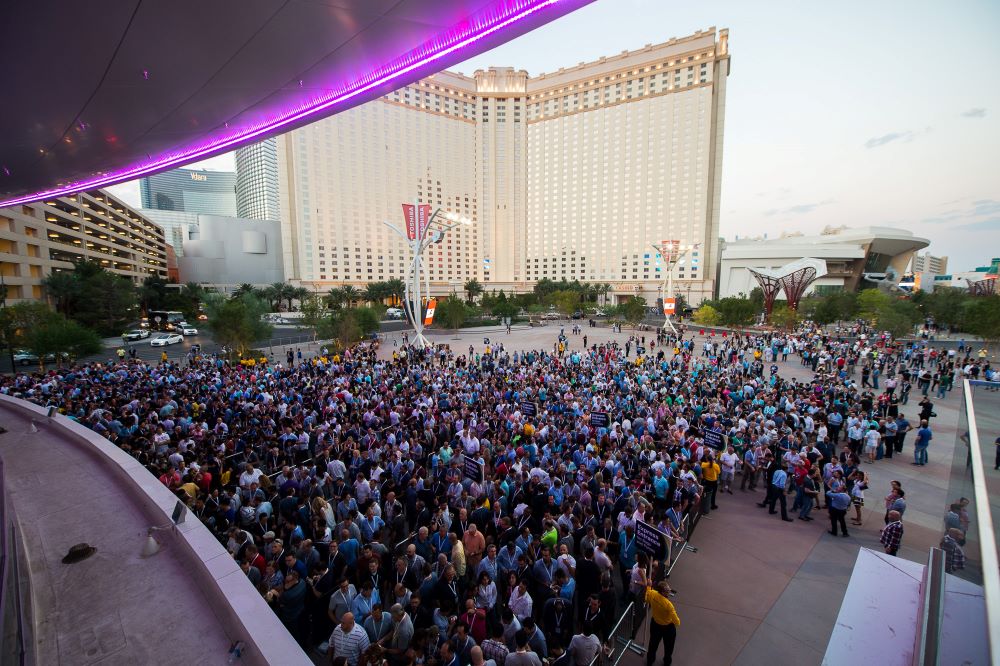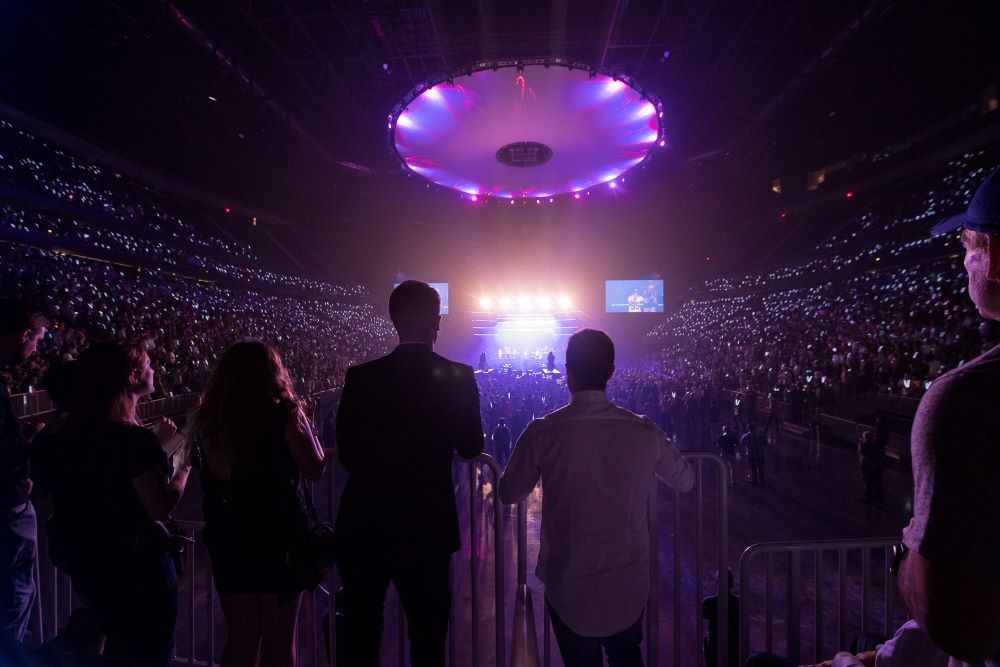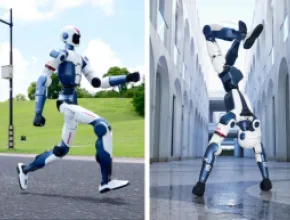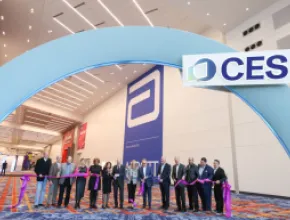Crowd-flow isn’t something you necessarily think about when it comes to smaller events. If you are planning an event for 20 people in a restaurant, you probably don’t worry about a bottleneck at the door.
But as the event size grows, so does the worry.
As an event producer who has planned numerous events at large venues, and especially at sports venues, here are seven tips for crowd-flow consideration at a sports arena for guest counts in the thousands.
[Related: Must-Know Sports Venue Event Tips From Seasoned Planners]
1. Don’t Let the Size of a Sports Arena Fool You!
You may be lulled into a false sense of security by the sheer size of a given sports arena. “The venue can hold 60,000 people; I only have 14,000—piece of cake.”
Keep in mind that the flow for a sporting event and for a special event are VERY different. For most sporting events, there is a 90-minute window for attendees to arrive and enter. That is a different flow than having thousands of attendees dropped off by bus all at the same time!
The sports crowd arrives in a steady, consistent flow and they have assigned seats. They generally know if they are going to a specific entrance based on their seat assignment and there are ushers to help them find their way.
In comparison, the arrival of a special event crowd, fresh from the convention center or hotel, is like a bomb being dropped. They all arrive simultaneously; they don’t know which entrance to go to. They don’t know where they want to sit or stand and there are only ushers to help if you, the planner, have told them what to do.
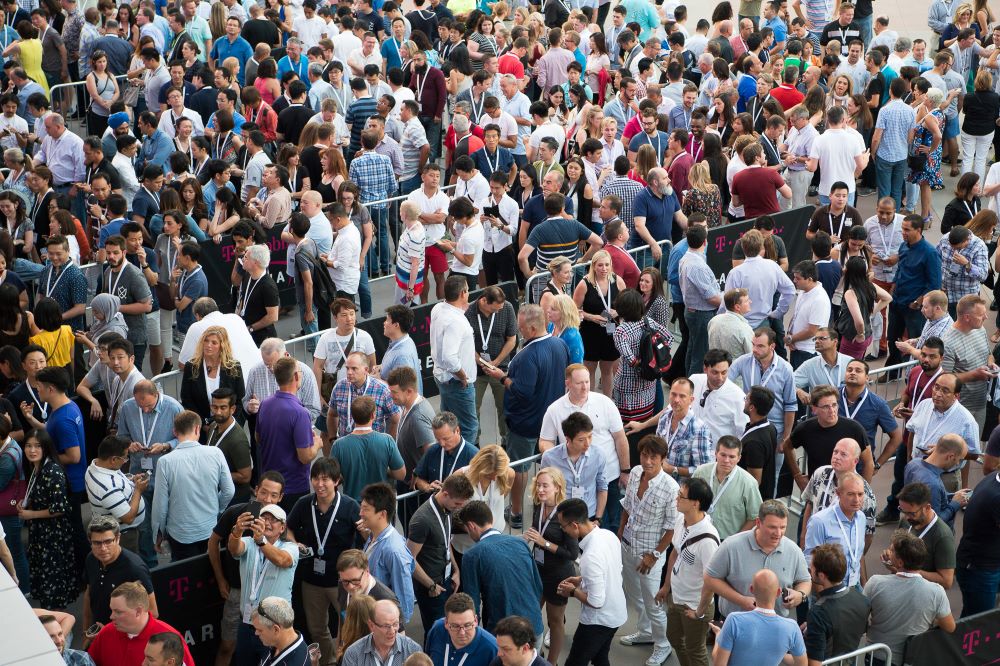
2. The Experience Starts When They Get on the Bus
The attendees have been at the conference for the better part of a week. It’s the final night before they go home and these folks are ready to let their hair down and have some fun. They will stand in a line, but they want to know where it’s going and how quickly.
Having clear signage and communication about bus schedules is key. It’s best if the buses to the special event can pick up the attendees from the same location used during the conference. Consistency and familiarity are also key, and clear signage on the bus is needed.
Playing music on the bus sets the mood and relaxes folks. When the buses arrive, they should drop attendees away from the venue. Other than attendees with disabilities, it’s best to let folks do a little walking. It makes it easier to direct them into lines if there is some room to maneuver.
Dropping guests too close to the venue doesn’t allow for contingency plans or re-direction.
[Related: Host Your Event at One of These U.S. Soccer Stadiums]
3. Multiple Entrances and Metal Detectors
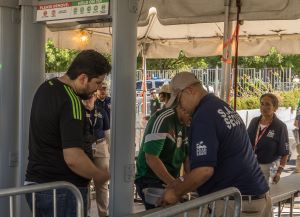 Sports arenas all have multiple entrances. The venue representative and the venue security lead will generally have a recommendation for which ones to open based on your attendee count.
Sports arenas all have multiple entrances. The venue representative and the venue security lead will generally have a recommendation for which ones to open based on your attendee count.
Keep in mind that the venue may be working from the typical sports fan arrival model and not understand the all-arrive-at-once model. It can be tricky because each entrance you open will have a budget impact.
You need to familiarize yourself with the venue metal detectors and entrance security protocols. The specific bag policy, metal detectors and security protocols can greatly impact the flow of attendees into the venue. While you never want to sacrifice safety for speed, there are ways to increase the speed of the lines.
It’s in your best interest to understand the different types of metal detectors. Some have a faster throughput than others. The more sophisticated ones (Evolv units) can detect questionable items as the attendee walks through the unit. Attendees don’t have to empty pockets or submit to a bag search—allowing maximum throughput.
Older metal detectors and burdensome protocols can bog down the line. You may need to negotiate for using hand wands to keep the line moving. Assigning specific lines for attendees with and without bags can also be helpful.
Some metal detectors count attendees as they walk through, allowing for a quick accounting of how many folks have come into the venue. You will want to understand how the venue counts attendees. If it is an old-fashioned staff person with a hand-clicker, then you will want to provide your own people with clickers so you have metrics to compare to the venue’s count.
Some arenas charge a per-person fee over the guarantee. You want to have your own set of statistics in case there is a discrepancy.
[Related: Los Angeles' Premier Sports Facilities Are Game-Changers for Meetings]
4. Bag Check
Sports arenas have gotten more limited with regard to permissible bag sizes. Make sure you understand the limits and that the rules are communicated repeatedly to your attendees. Have a bag check just in case.
5. Line Management Staff
You will need staff on the exterior of the venue directing folks into lines and also to other entrances, if needed.
Depending upon the credential for entry (conference badge or wristband), those staff should communicate with attendees to ensure they have their credentials handy to move them through security quicker. Sometimes the venue will have these staff.
Regardless, you will want a supervisor from your team at each entrance to problem solve and re-direct if needed.
6. F&B Concessions
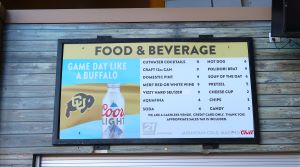 When planning food and beverage, use the existing concessions and food the venue regularly serves as much as possible.
When planning food and beverage, use the existing concessions and food the venue regularly serves as much as possible.
Sports arenas typically are not the place for high-end, complicated food—you will have more success leaning into their strengths. The in-house caterer may agree to provide “sushi,” but chances are it won’t be very good, or it will be brought in by a third-party vendor that you have no control over and may not even know about.
Understand the in-house concessionaire’s limitations in terms of what they can and can’t do. Don’t push them out of their wheelhouse. Some concessions within the venue may be run by outside vendors and not included in your F&B per-person. There may be a significant up-charge for using those concessions.
You will want to understand what F&B is included and what concessions are provided by outside vendors with an upcharge.
Related: More Sports Venues Content]
7. F&B Crowd-Flow
Depending upon the size of the crowd and the pace of their arrival, you may want to “push” the crowd deeper into the venue.
Arriving guests tend to be focused on finding the food and beverage. To avoid lines and congestion near the entrances, it is advisable to shut the bars and buffets that are nearest the entrances for up to 45 minutes. This allows guests to spread themselves out around the room or venue and discover other parts of the venue before storming the concession stand.
If a line that causes congestion starts to pile up, be proactive! Assigning experienced F&B staff to redistribute guests to areas with shorter lines is advised.
Strategically place staff to encourage your guests to venture further into the venue. Making it a game infused with humor can be very effective and fun. Digital and printed signage that reads, “Keep going for food and beverage” can also be very useful.
